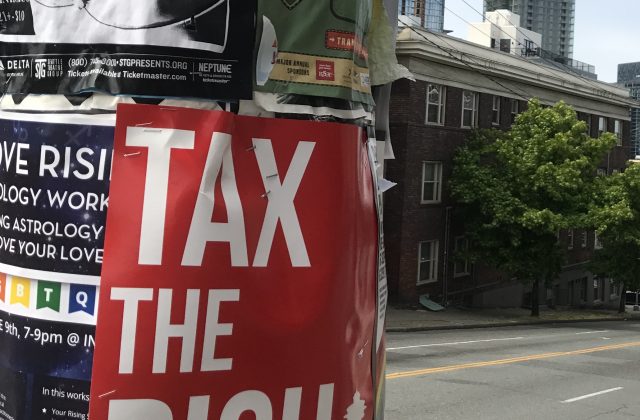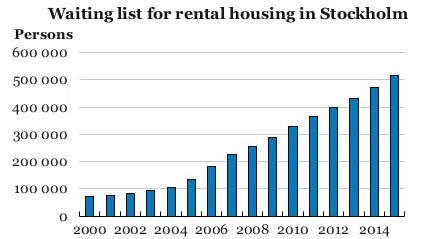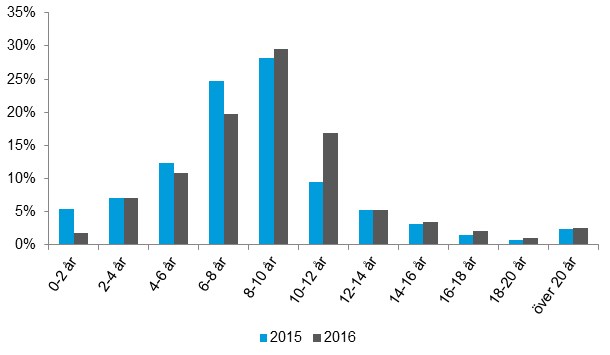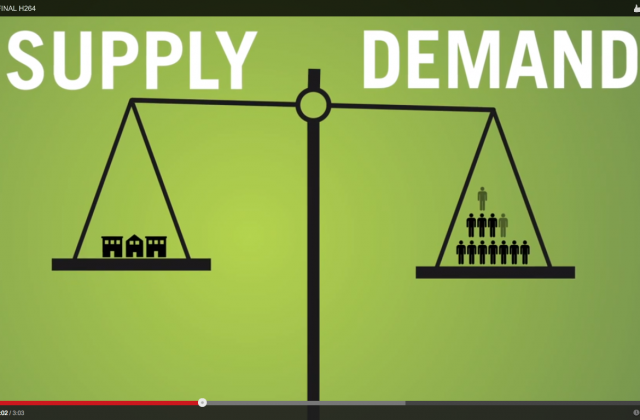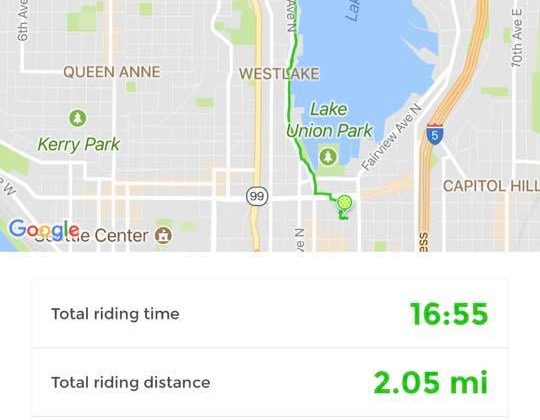Mayor and Council: It’s Time to Assess How Much You’ve Pushed Up Housing Costs
We’ve been here before. The Council and Mayor have been on a regulatory spree over the last several years, killing small-lot development, mircohousing, downzoning the low-rise zones, imposing unhelpful laws affecting tenants and landlords, and they are poised to do more. Meanwhile, they can’t muster up enough courage to fix the problems with the definition of Frequent Transit Service. So, while staff at Seattle Public Utilities consider expanding the kinds of infrastructure new housing will have to pay for, we sent this letter urging all of this to stop so we can at least get a sense of how all these costs are going to impact housing prices. It’s likely that this will just get a hand wave from the Council, but perhaps the wider community will agree and at least urge the City to consider whether and how much all these new rules and regulations are going to impact housing production and prices.
Here’s a link to the PDF of the letter
August 18, 2017
Dear Mayor Murray and Councilmembers,
A key section of Housing Affordability and Livability Agenda (HALA) Committee Report (pages 37-39) called “Reform the Review Processes,” says:
Construction of housing requires permits from a range of different agencies within the City of Seattle – Department of Planning and Development (DPD), Seattle Department of Transportation (SDOT), Seattle Public Utilities (SPU), and Seattle City Light (SCL). Long permitting processes and unpredictable timelines make housing projects difficult to develop and add to the cost of new housing. It is estimated that if significant reforms were made to Design Review and Historic Review, and improvements were made to the predictability of permitting within and between departments, total timelines for a complex multifamily development could be reduced by up to 2 months, and cost savings could total up to $4,000 per housing unit.
We’re very concerned that rather than cost saving reforms, the City is in the process of actively adding costs to housing production. Below are examples of new requirements and changes to policies that all add to the cost of housing. The point of this letter is not to debate the wisdom of any of any of these: some we think are ill conceived and other may have some merit.
Rather, we want to point out the cumulative impact these changes have and the apparent fact that no one in City government is aware of, let alone evaluating, the total impact of these issues. Some changes are legislative, and one might assume that City Council is aware of the financial implications of those enactments. Others changes are purely administrative and we see no sign that anyone in the individual departments is looking at the impacts of these changes, individually or cumulatively on housing prices. Here is a PARTIAL list of the issues:
- Water Main Extensions – Seattle Public Utilities is already requiring new and costly water main extensions for new housing based on sub divided lots rather than parent lots. This means that although water service is feasible from existing mains, new mains are being required. The effect is either fewer, more expensive units to avoid the additional costs or increasing the price of existing units to absorb the costs of the new water main. We understand that SPU may be in the process of increasing the circumstances where water main extensions will be required.
- New Drainage Requirements – Seattle Public Utilities is in the process of reviewing drainage requirements as well, and we’re concerned that new housing projects that can already handle drainage without new and expensive infrastructure are going to be required now to build storm water main extensions, another significant and we believe unnecessary added cost to housing production.
- System Capacity (or similar) Charges – It is our understanding that Seattle Public Utilities, or perhaps other instrumentalities of the City, are exploring implementing this type of charge to help build out the water/sewer infrastructure of the City.
- Impact fees – The Council is moving ahead with considering impact fees. We’re highly skeptical of this. While potentially legal if done properly, it’s hard to see how this would be implemented in Seattle. Again, this is yet another additional and still unknown cost to housing production and will increase housing prices.
- Separation from Electrical Wires – Recently Seattle City Light implemented a new policy that requires more separation between new construction and the SCL service lines. This has made some projects financially infeasible, has requires significant redesign to others and has necessitated costly and time-consuming relocation other SCL facilities, at the property owner’s expense.
- Definition of Frequent Transit Service – Currently there are dozens of projects currently in permitting with as many as 100 units and perhaps many more at risk because the City has not enacted legislation to clarify the definition of frequent transit service. Projects will be stopped or forced to add parking that will reduce supply and boost the price.
- Design review – New public meeting requirements are being added to design review, and while new square footage thresholds are an improvement, there are sure to be some additional costs for new meeting requirements and possible extensions of building timelines.
- Mandatory Inclusionary Zoning/Mandatory Housing Affordability – We know this program makes many projects infeasible because the cost of fees, inclusion, and additional construction to realize the benefits of additional floor area out weigh the value of that square footage. Again, this is an as yet unknown but significant cost and slowing of production, not to mention that many sellers of land in areas potentially impacted by upzones are beginning to demand more money for their property.
- New registry for vacant buildings – If a proposal goes forward to create an inspection and registration regime more complications will be added to many projects in low-rise zones.
Taken together with other initiatives, like a speculator tax, first in time leasing requirements and limits on screening new tenants, we are seeing more and more costs being added not taken away. This means higher prices at a time when everyone seems to be repeating that, “we are in a housing crisis.”
We urge you to first, stop these efforts or slow them until we get a better accounting of how much cost these and other requirements are adding to overall costs of production. This would give everyone a chance to determine the relative value of these changes compared to the value of increasing the production and lowering the price of new housing.
Second, the new Mayor would likely benefit from this information and it would allow her to work with stakeholders to make these decision in 2018 rather than having to reverse course on efforts begun in the 4th quarter of this year.
Currently, the most urgent of all these are Seattle Public Utilities work on changing water access and drainage requirements. This, along with possible changes to tap fees to offset higher bills for ratepayers, is an issue that needs a higher-level conversation with stakeholders before decisions are made.
Sincerely,
Roger Valdez
Jesus, Hayek, and Friedman Walk Into a Homeless Encampment….
I’ve known Brice Maryman for a decade now. Maryman emerged as a leader both in the field of landscape architecture but also as a community leader for parks in Seattle. Sometimes Maryman and I would even have good natured banter about whether a particular parcel ought to be a park or housing. But Maryman gets the bigger issues associated with all of the issues of public space, parks, density, housing, price, and affordability. He was also a leader in the community driven 2008 Parks and Green Spaces Levy which passed overwhelmingly and raised $146 million over 6 years for parks.
Now, Maryman, a senior landscape architect with MIG|SvR in Seattle, is the recipient of a Landscape Architecture Foundation Fellowship for Innovation and Leadership. Maryman’s Fellowship project is called HomeLand.
With compassion, respect and empathy, the HomeLand project intends to present proactive strategies that respect each individual’s “right to housing” and “right to the city,” while also enhancing public spaces that are significantly impacted by our current, haphazard strategies for managing homelessness. The project will explore the spatial manifestations of homelessness on the urban landscape, document current management approaches, and offer comprehensive, community‐based spatial strategies at the region, city and neighborhood scales to create better, more successful public spaces for all.
HomeLand includes a podcast series and Maryman has included me as one of his interviewees. You can listen to the whole podcast but I’ve also pulled out some of my key comments on homelessness that draw from what some might consider incompatible intellectual sources, like Jesus, Fredrich Hayek, and Milton Friedman and many others I didn’t necessarily name. These are some highlights from our discussion and at the 35 minute time mark, we have a lengthy discussion about my experience with Farmworker housing and how that’s influenced some of my views about this issue. I’m appreciative to Maryman for his time, his great contributions to our city so far, and for his efforts to add something thoughtful and useful to a so far mostly contentious discussion of homelessness and public space.
——————————–
On the History of Smart Growth Seattle
“We do a lot of pushing back because right now in this environment there are a lot of efforts to attenuate the housing supply by well intentioned people and by people that also just don’t want anymore housing. But, so, our job, a lot of it, is pushing back. We also try to have some more forward looking ideas about, you know, what sorts of things could we do to promote more innovation both on the financing side and on the construction side, you know, just broadly, you know, how do we improve the conversation about growth. We don’t get to do a lot of that. We end up doing a lot of hassling over rules and regulations.”
On Homelessness and the Concept of Home
“I think people have a strong sense of home that is different than shelter, and different than housing, and different than housing units, and I think that those of us who are, who come from a standard issue perspective on housing sometimes think of this as a unit issue, or a construction issue, or this-is-what-its-supposed-to-look-like issue, and I think that that prevents us from seeing innovative solutions and ideas for meeting people where they are at and recognizing that not everybody just wants a unit.”
On the Ways Regulation Makes Homelessness Worse
“There’s a baseline of health and safety that needs to be built into our solutions to housing. But that has become a mechanism by which to exclude innovative solutions. And so, the same arguments that are used against tents, improvised shelters, the encampments were used against microhosuing, against small single-family houses, and it was like, “Well, that’s too small!” or “People shouldn’t have to live like that.”
Because there is an expectation that home and housing is either an apartment or a single-family home or something that looks like where I live, “I” being a hypothetical “I.” And so, what ends up happening is that the building code becomes a kind of a class, a tool for class identification, and it’s no longer just purely a health and safety measure or intervention, it becomes a litmus test for, “Have you earned enough money to live in ‘real housing?’”
On Car Shelter and Encampments as an Example of Hayek’s Spontaneous Order
“Human beings, when kind of left to their own devices, will solve their problems individually and collectively in innovative and unique ways all the time, whether it’s on a desert island, or whether it’s under a bridge, or whether it’s building microhousing, or sending somebody to the moon. Human beings inherently have this kind of spontaneous quality about them that when they see something going wrong they rally around and try to fix it. Or they organize themselves to make money at it. Or they figure out, “Hey, nobody is building things like this, let’s build that.” And I see the use of public space for shelter, for housing, as completely consistent with that whole concept of, look, let’s let people solve the problem.”
On Public and Private Space for Shelter
“The notion that someone is using a part of the park space as shelter is not controversial. Now what is controversial to me, is when the City wants to take private space, and dictate what happens in private space in the same way.”
On Loving Our Neighbors
“Ultimately, we’re all in this together. We’re gonna make mistakes. And what I think you’re going to find, consistently, in all these questions is, there are going to be things that are really going to push your buttons, and it’s going to make you really upset and angry or afraid. Homelessness is a terrifying thing, because it hits at some real core thins that human beings have around family, safety, survival, and when you are confronted with the manifestation of that in your face, in the public realm, it forces, it causes you to make it want to go away. For me, the principle, I think, that I think as a Christian, that forces me to confront is, “Well, that’s probably a place where I need to go.” You know, if I’m disturbed or concerned, I need to go there. And I think that we need to push ourselves to ask these questions of, ‘Is that person a homeless person, or is that my neighbor?’”
On “What Are We Going to Do About It?”
“I think it comes down to a pretty simple question of talking to the people, figuring out what it is they need and want, and then working it out to so we can accommodate them. And I’m not really that concerned about the anxiety that it creates in the surrounding community, except to say that, “I get it. I understand why this is disturbing. But what are we going to do about it?”
On What Jesus, Hayek, and Friedman Would Do
“ We need to stop freaking out about this, wade into that community, ask questions, and support it as a leverage, because I think that’s what Jesus would do, I think that’s what Hayek would say, I think that’s would Milton Friedman would say, is he’s say, “These people have figured out a solution.” The last thing you want to do go in there and crack heads and start tearing it apart. It took them a long time to build this solution up, maybe there’s something there we can build off of.”
This is a really useful explanation by Fredrich Hayek on why the pricing system is so important and why, arguably, it is not a system of individual greed, but rather one of broader benefit that truly combines individuals into collaborative communities.
The Stockholm Effect: Free Housing is Expensive When There isn’t Enough
Before a share a stunning article about the housing situation in Stockholm I want to restate the point I made yesterday: Even if housing was free, an entitlement guaranteed to every person or family, if there isn’t enough, high prices will be replaced with rationing. In other words, what drives housing access issues isn’t greed or even necessarily population growth; when there are more people that want housing than there is housing available prices go up either in the form of money or being forced to wait until a unit becomes available. An article looking at the “insanely difficult to find housing in Stockholm” validates my point. First, remember, Stockholm has the very system of rent control and government mandates that some people in Seattle dream of having here.
Here are two, short paragraphs that should make anyone think twice or three times:
The average waiting time to be eligible for a rental apartment in Stockholm was nine years in 2016. The average waiting times are 14 and 16 years in attractive central neighborhoods like Kungsholmen and Södermalm, respectively.
It’s normal practice in Stockholm that parents register their newborns in the rental queue, so that they have a chance of their own flat once they graduate high school.
Not enough. How about some visuals.
Why is getting worse?
The waiting line for rental apartments (including student housing) grew with eight percent, or almost 40,000 people, during 2016. This stands in stark contrast to Stockholm Housing Agency’s ability to cater to this skyrocketing demand Last year, only some 12,000 people got their apartments through the agency, albeit a new record.
It’s a simple answer: production of new units is not keeping up with the demand. Again, price in money isn’t the issue, but the price of waiting is “skyrocketing.”
Here’s a graph showing average wait times:
The Organisation for Economic Co-operation and Development (OECD) recommends in it’s report that Stockholm, “ease rental regulations to incentivise housing supply, mobility and better utilisation of the housing stock, while maintaining tenant protection against abuse.”
Let me put part of that recommendation in bold: Ease rental regulations to incentivise housing supply!
This is not the Rental Housing Association saying this, or builders or developers from somewhere around the corner. This is coming from Europe about what most people around here consider to be a socialist paradise. Well, it isn’t and slicing the pie thinner and thinner doesn’t work whether housing is run by the government or by a market economy. The message is the same, always: build more housing, of all kinds, in more places, for all levels of income.
One More Time: Even if Housing Was Free, We’d Still Need More
Once again The Stranger’s Charles Mudede is spinning a jargon rich but still fantastical tale to get to his point: decommodify housing. Or, in other words, make housing an entitlement. Or in one word, make housing free! Mudede’s opinion matters because, even though I totally disagree with him, he is one of the few people advancing an intellectual argument about housing. It’s a funhouse intellectual argument, but still, it has some principles underneath it. It also matters because Mayoral candidate Carey Moon apparently listens to Mudede. If she’s elected will Mudede’s socialist ideas end up informing policy? That’s concerning. Let’s take a look at the premise Mudede sets out, that the reasons for high prices are what he calls “speculation.”
Mudede’s tale is all about money having sex with money and making more money. Nobody makes money the “old fashioned way” as John Houseman used to say. I think, at it’s base, Mudede, like most people with socialist flavored beliefs, think that money is being made in real estate today without any work being done. That’s just not true.
&;
Talk to a builder who is building that project across the street. She found a parcel of land, hired an architect, went to a bank or other lender, shared a pro forma, and if she’s successful, she’ll get a loan or some sort of financing. Construction begins. Equipment is purchased. Jobs are created. Materials are purchased and delivered. Permitting gets going before that and then design review. Her ability to succeed (pay the bills, deliver the product to the market, and pay her self and have money for the next project) involves assumed risk quantified by the terms of the loan. And she has to meet the lenders time line and be sure that her product gets to market in time before prices change.
The sales price or rents she can charge is set by the market; what can people pay and what they are willing they pay. All of this takes 18 months or more. And it’s going on every day. It’s real construction, by real people, financed by other real people to sell housing to real people who need it. It’s hardly the “dark energy” of some galactic corporation using an algorithm to shift large sums of money around. It’s still the butcher, the baker, and the candlestick maker. It’s wholesale and retail. Mudede doesn’t like this because it also means price is old fashioned; it’s the quantitative indicator of supply and demand. That’s too “neo-classical” for Mudede, he needs something more avant-garde.
Even if we accepted the bogus premise that price is going up because of “speculation,” it just distracts from Mudede’s far more relevant and legitimate point that housing should be free, part of the public domain. Housing, he argues, out to be a right and a guarantee to all, passed down with no price at all.
This point doesn’t need some glitchstep view of economics. Just give everyone housing! However, we don’t do that with anything else. Our entitlement system in this country is anchored to work and taxes. We’ve never had something that we’re assured; one has to apply for social benefits. You may not like that, but it’s a huge cultural and political reality; we’ve never done it. And we can argue about whether we should or shouldn’t.
But here’s more reality. Even if housing was an entitlement from the government we’d still need more of it. While Mudede distracts with rhetorical fire dancers and tight rope walkers, that basic fact persists; if 1000 people want housing and you only have 100 units of housing you need more building.
Unless supply keeps up with demand, we’ll still have shortages and then the government will have to ration the housing. How would they decide who’s on a wait list? Who knows? I guess Cary Moon and Mudede and Sawant can dream up a system for making the wait list.
Or we can have the market do the rationing, creating higher prices and a financial incentive for private parties to meet demand with new and financed construction. It is unequal and sometimes unfair. But a system of rationing by criteria set up by central planners would be unfair too. But if our policy makers just took the brake off, we’d see prices respond and the wait list created by higher prices would dissipate. When we don’t make enough of something prices go up, a form of rationing by more impersonal forces. But these forces, as Milton Friedman are more rational and collaborative, and if we encourage them, produce better results.
This is the way it works. We either build more housing and lower prices, or we seize the housing market, make housing an entitlement. But even if we did, we’d still have to build more housing to end the wait list for the entitlement. I’m the first case, as Milton Friedman points out with his analogy of the pencil, thousands of people collaborating through self interest will solve the problem and distribute the product, housing. In the second case, Commissar Mudede and friends decide at the Bureau of Housing when you get your 500 square feet of housing and where.
Do we really need to waste time on this? Socialism always fails, because whether you’re living in North Korea or London, scarcity is scarcity; the solution to it is more. Mudede makes the election of Moon worrisome. This is a misdirection and a time waster. We know what to do: make more housing, of all kinds, in all parts of the city, for all levels of income. We can still have a side show and Mudede can run it and give away tickets for free. Let’s not play games with housing.
Parable of LimeBike: What if the City Council Treated Bike Share Like Housing?
The other day I was at a meeting in Fremont. When it was done, I decided I’d just walk back to my office in South Lake Union. It was a beautiful day, I could make calls and still send a couple e-mails on the way. I got a across the Fremont Bridge, and there, right on the other side, was a LimeBike. LimeBike is a bike share service that allows customers to download an application on a phone, use it to locate and then unlock a bike. The bikes are, increasingly, everywhere. So ubiquitous and easy to use that I stopped, looked at the bike, and thought, “Hmmm.” I took out my phone and pointed the camera feature to the code on the bike, and bam! it unlocked. In less than a minute I was riding down the bike path. How much did it cost? Nothing. Zero. It was free. More importantly, the trip saved me time. Eventually, the price will go up to — are you sitting down — $1 a ride. LimeBike along with at least two other such services are able to provide this service low cost because it’s been permitted, there is lots of competition, and there is lots of demand. It’s working!
As a story on CNN pointed out, Seattle has gone from a complete failure in bike sharing to a national leader in a matter of months. Market solutions work. Fast. Consider how the removal of price controls by Ludwig Erhard obliterated hyperinflation in Berlin after the Second World War. So like I did with my hot dog and corn dog examples, I wondered, what would happen if the City Council got a hold of the growing bike share market. Here’s what I think might happen.
—————–
Seattle Times — Citing concerns about the rapid rise of local bike share companies, some of them from China, renting bikes for as little as a $1 a trip Councilmember Lisa Herbold is proposing legislation to impose stricter limits on the number and location of the bikes. Also supported by Councilmembers Mike O’Brienand Kshama Sawant , the legislation would limit the total number of bikes to 300 and increase that by 25 per year after Council approval. Companies could apply to add more bikes for a fee after an extensive design review process evaluating the look and feel of the bikes. People living close to where the bikes are placed would be empaneled for a 3 month review process.
“We’re worried these bikes aren’t accessible to all,” said O’Brien, “and many of them are downright ugly, ruining the character of the neighborhood.” The Council’s legislation will mandate equal distribution across census tracts. In areas of “low opportunity” adding bikes will come with a higher charge and more intensive review.
“For too long people in the poorest areas of the city have gone without bikes; if a company wants to add more in those areas, they’ll have to pay,” said Sawant. “These big corporations are making profit from selling basic necessities.”
To be sure that bikes are affordable a new fee will be assessed on each bike ranging from $1 to $25, with the highest charges being in Rainier Beach. Funds collected from the program will be granted out to non-profit bike share companies. An official from one of these companies Bikeplex said, “we just don’t have enough affordable bikes.” Bikeplex has 5 bikes that it rents for free but has had trouble producing more. “We have a lot more rules taking money from the City and that makes our costs much higher than the for profit guys.” The City couldn’t cite a figure for how many free bikes the program would produce. “We’re still figuring out the numbers,” said a planner.
“Once again the Council is trying to make something less expensive by increasing its price,” said bitter housing activist guy Roger Valdez. “Instead of increasing access to bikes as a great alternative to driving this will just raise prices and discourage people will less money to use them and they’ll drive instead.”
When asked for his reaction, Kevin Ridsdale, an occasional commenter on the City Builder Facebook said, “What?”
The Mandatory Access and Diversity Bike program, MAD Bike for short, will be debated but already has broad support on the Council and from the Mayor. Stopped on his way to a ceremony removing various statues around town the Mayor said, “the MAD program is our way of telling Donald Trump: ‘Your views aren’t welcome here!”
